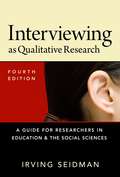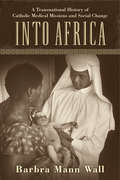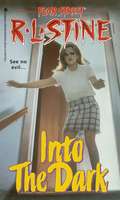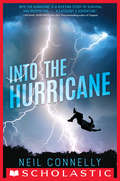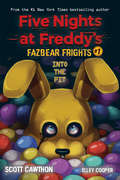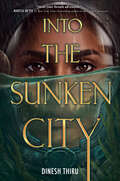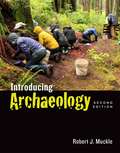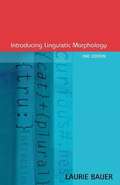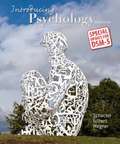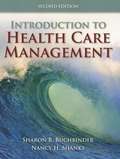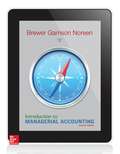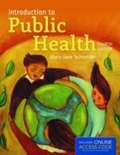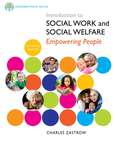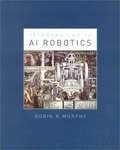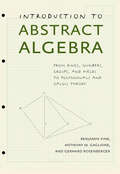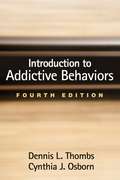- Table View
- List View
Interviewing as Qualitative Research: A Guide for Researchers in Education and the Social Sciences 4th Ed
by Irving SeidmanNow in its fourth edition, this popular book provides clear, step-by-step guidance for new and experienced interviewers to develop, shape, and reflect on interviewing as a qualitative research process. Using concrete examples of interviewing techniques to illustrate the issues under discussion, this classic text helps readers to understand the complexities of interviewing and its connections to broader issues of qualitative research. The text includes principles and methods that can be adapted to a range of interviewing approaches.
Interviewing in Action in a Multicultural World, Fifth Edition
by Bianca Cody Murphy Carolyn DillonThis is a text for both graduate and undergraduate students preparing to work in a variety of fields: social work, counseling, psychology, human services, criminal justice, psychiatric nursing, school counselors, and a variety of other helping professions. The book provides students with the clinical wisdom and hands-on practice to fully develop their clinical interviewing skills.
Intimate Matters: A History of Sexuality in America
by John D'Emilio Estelle B. Freedman“Fascinating . . . chart[s] a gradual but decisive shift in the way Americans have understood sex and its meaning in their lives.” —New York Times Book ReviewThe first full length study of the history of sexuality in America, Intimate Matters offers trenchant insights into the sexual behavior of Americans, from colonial times to today. D’Emilio and Freedman give us a deeper understanding of how sexuality has dramatically influenced politics and culture throughout our history.“Intimate Matters was cited by Supreme Court Justice Anthony Kennedy when, writing for a majority of court on July 26, he and his colleagues struck down a Texas law criminalizing sodomy. The decision was widely hailed as a victory for gay rights. . . . The justice mentioned Intimate Matters specifically in the court’s decision.” —Chicago Tribune“With comprehensiveness and care . . . D’Emilio and Freedman have surveyed the sexual patterns for an entire nation across four centuries.” —Nation“Comprehensive, meticulous and intelligent.” —Washington Post Book World“This book is remarkable . . . [Intimate Matters] is bound to become the definitive survey of American sexual history for years to come.” —Roy Porter, Journal of the History of the Behavioral Sciences
Intimate Relationships (Second Edition)
by Benjamin R. Karney Thomas N. BradburyAs the first text to fully capture the excitement of today's research findings on couples, Intimate Relationships answers fascinating questions: How do relationships work? Why are they so hard sometimes? What are the principles that guide them? How can we use what we know to make them better?
Into Africa: A Transnational History of Catholic Medical Missions and Social Change
by Professor Barbra Mann WallThe most dramatic growth of Christianity in the late twentieth century has occurred in Africa, where Catholic missions have played major roles. But these missions did more than simply convert Africans. Catholic sisters became heavily involved in the Church's health services and eventually in relief and social justice efforts. In Into Africa, Barbra Mann Wall offers a transnational history that reveals how Catholic medical and nursing sisters established relationships between local and international groups, sparking an exchange of ideas that crossed national, religious, gender, and political boundaries. Both a nurse and a historian, Wall explores this intersection of religion, medicine, gender, race, and politics in sub-Saharan Africa, focusing on the years following World War II, a period when European colonial rule was ending and Africans were building new governments, health care institutions, and education systems. She focuses specifically on hospitals, clinics, and schools of nursing in Ghana and Uganda run by the Medical Mission Sisters of Philadelphia; in Nigeria and Uganda by the Irish Medical Missionaries of Mary; in Tanzania by the Maryknoll Sisters of New York; and in Nigeria by a local Nigerian congregation. Wall shows how, although initially somewhat ethnocentric, the sisters gradually developed a deeper understanding of the diverse populations they served. In the process, their medical and nursing work intersected with critical social, political, and cultural debates that continue in Africa today: debates about the role of women in their local societies, the relationship of women to the nursing and medical professions and to the Catholic Church, the obligations countries have to provide care for their citizens, and the role of women in human rights. A groundbreaking contribution to the study of globalization and medicine, Into Africa highlights the importance of transnational partnerships, using the stories of these nuns to enhance the understanding of medical mission work and global change.
Into the Dark (Fear Street Superchillers #50)
by R.L. StinePaulette Fox refuses to let her blindness stop her from living a full life. But one thing she's never done is fall in love—until now. Paulette knows Brad is the only guy for her. Even when her friends see Brad commit a horrible crime, Paulette is sure that he’s innocent. Her friends tell her he’s out of control, that she will be his next victim. But Paulette is sure he would never hurt her. Is Paulette right about Brad? Or has her love put her in terrible danger?
Into the Hurricane
by Neil ConnellyEli and Maxine fight to escape both the hurricane sweeping Shackles Island and the phantoms haunting them in this richly written survival story.TWO PEOPLE WITH LOSSESEli and Max both have good reasons to go to the lighthouse on Shackles Island. For Max, it's an old vacation spot, the rare location where she has only good memories -- so it's the right place to scatter her dad's ashes. For Eli, it's the highest point near his Louisiana home, with the clearest view of the rocks where his sister died -- so it's the right place to end his own life as well.A STORM WITHOUT LIMITSBut neither of them expected the other, nor the storm. Because Hurricane Celeste is roaring toward Shackles Island, and its power will break bridges, slash electric lines, and stir up deadly wildlife -- some of it human. When the ruthless Odenkirk family steals Max's Jeep with her most precious possession inside, she and Eli begin a desperate quest to get it back and get off the island ... until they realize they must go into the hurricane.
Into the Midnight Void (Beyond the Ruby Veil #2)
by Mara FitzgeraldFans of Holly Black and Kendare Blake will obsess over the conclusion to this deliciously dark YA fantasy duology!Emanuela has finally gotten what she's always wanted. Since escaping her catacomb prison, she's become the supreme ruler of everything under the veils. Finally, she has the power to throw aside senseless, old traditions and run things exactly the way they should be. But when cracks in her magic start to show, Emanuela begrudgingly allies herself with her enemies, including her frustratingly alluring archnemesis, Verene. Together, they discover deeper truths about the mysterious blood magic Emanuela and Verene both wield. There is a higher, otherworldly authority outside the veils, and in order to save Occhia and the other realms, Emanuela may just have to rip another crown off someone's head.
Into the Pit: An AFK Book (Five Nights At Freddy's #1)
by Scott Cawthon Elley CooperFive Nights at Freddy's fans won't want to miss this pulse-pounding collection of three novella-length tales that will keep even the bravest player up at night . . .What do you wish for most? It's a question that Oswald, Sarah, and Millie think they know the answer to. Oswald wishes his summer wasn't so boring, Sarah wishes to be beautiful, and Millie wishes she could just disappear from the face of the earth. But in the twisted world of Five Nights at Freddy's, their hearts' deepest desires have an unexpected cost.In this volume, Five Nights at Freddy's creator Scott Cawthon spins three sinister novella-length stories from different corners of his series' canon, featuring cover art from fan-favorite artist LadyFiszi. Readers beware: This collection of terrifying tales is enough to unsettle even the most hardened Five Nights at Freddy's fans.
Into the Sunken City
by Dinesh Thiru"Steal-your-breath adventure." —Marissa Meyer, #1 New York Times bestselling author of the Lunar ChroniclesPerfect for fans of Fable and House of Salt and Sorrows, this spectacular YA fantasy adventure debut is like nothing else, featuring a unique twist on Treasure Island, a magnetic second chance romance, and a thrilling heist where the reward is great—but the risks are even greater.In the slowly sinking city of Coconino, Arizona, the days are long, the money is tight, and the rain never stops.For Jin Haldar, this life is nothing new—ever since her father died in a diving accident, she’s barely made ends meet for her and her younger sister, Thara.Enter Bhili: a drifter who offers Jin and Thara the score of a lifetime—a massive stash of gold hidden in the sunken ruins of Las Vegas.Jin knows it’s too dangerous. She stopped diving after her father’s accident. But when her sister decides to go, Jin’s left with only one choice: to go with her.A ragtag crew is assembled—including Jin’s annoyingly hot ex-boyfriend. From there, a high-stakes heist ensues that’s beyond even Jin’s wildest fears. Crumbling ruins, sea beasts, corsairs, and a mysterious figure named João Silva all lie in wait. To survive, Jin will have to do what she promised herself she’d never do again: dive.
Introducing Archaeology (Second Edition)
by Robert J. MuckleIntroducing Archaeology offers a lively alternative to many other texts. While covering traditional elements of archaeology, including methods and prehistory, the book also integrates the key principles of curriculum reform for the twenty-first century, as outlined by the Society for American Archaeology. The second edition highlights recent developments in the field and includes a new chapter on archaeology beyond mainstream academia. It also integrates more examples from popular culture, including mummies, tattoos, pirates, and global warming. What results is a surprisingly fresh and contemporary take on archaeology, one that situates the discipline within, but also beyond, the academy. Introducing Archaeology is accompanied by a free website with chapter-by-chapter resources for students, including study questions. Visit www. introducingarchaeology. com. Instructor ancillaries for Introducing Archaeology include an instructor's manual, PowerPoint slides, and a testbank.
Introducing Buddhism
by Damien Keown Charles S. PrebishIntroducing Buddhismis the ideal resource for all students beginning the study of this fascinating religious tradition. It explains the religion's key teachings and traces its historical development and geographical spread of from its foundations up to present day. Charles S. Prebish and Damien Keown, two of today's leading Buddhist scholars, devote a chapter each to the major regions where Buddhism has flourished - India, South-east Asia, East Asia and Tibet. In addition, contemporary concerns are discussed, including important and relevant topics such as Engaged Buddhism, Buddhist Ethics, Buddhism and the Western World and Meditation. This new edition includes more material on the different schools of Buddhism including explanations in graphic form, monastic life, popular religion, Buddhist ethics, ritual, the Bodhisattva Path, the Jatakas, the transmission of Buddhism, and class, gender and race. Introducing Buddhismincludes illustrations, extracts from original sources, summary boxes, questions for discussion, suggestions for further reading and a companion website at www. routledge. com/textbooks/9780415550017 Charles S. Prebishis Charles Redd Chair of Religious Studies at Utah State University. Damien Keownis Professor of Buddhist Ethics at Goldsmith's College, University of London. They are the editors of the Encyclopedia of Buddhism (Routledge, 2007).
Introducing Linguistic Morphology
by Laurie BauerA newly expanded and updated edition of one of the best-selling introductions to linguistic morphology -- the study and description of word formations in languages -- that deals with inflection, derivation, and compounding, the system of word-forming elements and processes in a language. Basic concepts are introduced, with an abundance of examples from a range of familiar and exotic languages, followed by a discussion of, among other topics, the definition of word-form, productivity, inflection versus derivation, and the position of morphology to phonology -- the science of speech sounds, especially the history and theory of sound changes in a language. Along with two new chapters discussing morphology and the brain and how morphology arises, changes, and disappears, this new edition includes exercises and a glossary of key terms.
Introducing Psychology With Updates On DSM-5
by Daniel M. Wegner Daniel L. Schacter Daniel T. GilbertA great read is just the beginning. . . Instructor and student evaluations from coast to coast attest to the Dans' captivating writing These award-winning bestselling authors know how to enthrall students with the subject they love best--psychology But in the new edition of Introducing Psychology, they go even further to ensure that students won't commit one of the seven sins of memory--forgetting what they just read Special Cue Questions and Critical Thinking questions give students the opportunity to process psychological concepts and aid their understanding and memory And if you've ever heard someone parrot a widespread misconception, you'll welcome the new Changing Minds questions, short scenarios which ask students to confront common misunderstandings of psychological phenomena Now the book that students love to read is as unforgettable as ever! DSM 5 Updates Available for Fall 2014 classes, this update version features new content from the Dans in response to the release of the DSM-5. This new content is integrated into the text without changing pagination or the structure of the chapters. A special DSM 5 Supplement by the Matthew Nock, new coauthor with the Dans of Psychology, Third Edition, is available for Fall 2013 and Spring and Summer 2014 courses. View the Page-Referenced Guide to the DSM-5 updates for Psychology.
Introducing Social Semiotics: An Introductory Textbook
by Theo Van LeeuwenSocial Semiotics is a lively introduction to the ways in which different aspects of modern society combine to create meaning. These "semiotic resources" surrounding us include obvious modes of communication such as language, gesture, images and music, but also less obvious ones such as food, dress and everyday objects, all of which carry cultural value and significance. Social Semiotics uses a wide variety of texts including photographs, adverts, magazine pages and film stills to explain how meaning is created through complex semiotic interactions. Practical exercises and examples--as wide ranging as furniture arrangements in public places, advertising jingles, photojournalism, and the rhythm of a rapper's speech--provide readers with the knowledge and skills they need to be able to analyze and also produce successful multimodal texts and designs. The book traces the development of semiotic resources through particular channels such as the history of the press and advertising; and explores how and why these resources change over time, for reasons such as advancing technology. Featuring a full glossary of terms, exercises, discussion points and suggestions for further reading, Social Semiotics makes concrete the complexities of meaning-making and is essential reading for anyone interested in how communication works.
Introducing World Religions
by Victoria Kennick UrubshurowIntroducing World Religions offers an exciting new approach to the study of world religions. It explores the main religions of both East and West, situating them in a cross-cultural context and using a powerful dramatic metaphor to bring them alive for students. Ideal for one-semester or modular introductory survey courses, Introducing World Religions will be essential reading for any student of religions, worldwide.
Introduction To Health Care Management
by Sharon B. Buchbinder Nancy H. ShanksIntroduction to Health Care Management is a concise, reader-friendly, introductory healthcare management book that covers a wide variety of healthcare settings, from hospitals to nursing homes and clinics. Filled with examples to engage the reader's imagination, the important issues in healthcare management, such as ethics, cost management, strategic planning and marketing, information technology, and human resources, are all thoroughly covered. Guidelines and rubrics along with numerous case studies make this text both student-friendly and teacher friendly. It is the perfect resource for students of healthcare management, nursing, allied health, business administration, pharmacy, occupational therapy, public administration, and public health. "Drs. Buchbinder and Shanks have done a masterful job in selecting topics and authors and putting them together in a meaningful and coherent manner. Each chapter of the book is designed to give the student the core content that must become part of the repertoire of each and every healthcare manager, whether entry level or senior executive. Each of the chapters and accompanying cases serve to bring to life what it means to be a truly competent healthcare manager.
Introduction To Managerial Accounting 7th Edition
by Eric W. Noreen Ray H. Garrison Peter C. BrewerIntroduction to Managerial Accounting, 7/e by Brewer/Garrison/Noreen is based on the market-leading text, Managerial Accounting, by Garrison, Noreen and Brewer. The 7e is a briefer, more accessible, and thoroughly student-friendly text that satisfies the basic needs of the managerial accounting student without unnecessary depth on advanced topics associated with the follow-up course cost accounting/cost management. Faculty and students alike will find this new edition has retained the hallmark features of the Garrison brand: author-written supplements, excellent readability, terrific examples, and balanced end-of-chapter material.
Introduction To Mineralogy
by William NesseThe second edition of Introduction to Mineralogy follows the highly successful first edition, which become an overnight market leader. Introduction to Mineralogy consolidates much of the material now covered in traditional mineralogy and optical mineralogy courses and focuses on describing minerals within their geologic context. It presents the important traditional content of mineralogy including crystallography, chemical bonding, controls on mineral structure, mineral stability, and crystal growth to provide a foundation that enables students to understand the nature and occurrence of minerals. Physical, optical, and X-ray powder diffraction techniques of mineral study are described in detail, and common chemical analytical methods are outlined as well. Detailed descriptions of over 100 common minerals are provided, and the geologic context within which these minerals occur is emphasized. Appendices provide tables and diagrams to help students with mineral identification, using both physical and optical properties. Numerous line drawings, photographs, and photomicrographs help make complex concepts understandable. Introduction to Mineralogy is available with Daniel Schulze's An Atlas of Minerals in Thin Section for a nominal additional fee. NEW TO THIS EDITION: -New 2-color design to clarify information hierarchy and presentation -Expanded selection of mineral photos -Improved presentation of physical properties of minerals in chapter 1 -Updated mineral descriptions -New coverage of minerals and health
Introduction To Public Health 4th Edition
by Mary-Jane SchneiderIntroduction to Public Health, Fourth Edition offers a thorough, accessible overview of the expanding field of public health for students new to its concepts and actors. Written in engaging, nontechnical language, this best-selling text explains in clear terms the multi-disciplinary strategies and methods used for measuring, assessing, and promoting public health. Packed with illustrative real-world examples, this updated edition provides students with informative discussions of the current technical issues and practical obstacles facing public health practitioners and policymakers alike. Through coverage of new approaches to research and data collection, current best practices in the field, and the social and ethical challenges of devising public policy, Introduction to Public Health, Fourth Edition provides readers with a broad-reaching, practical framework for understanding the multifaceted forces and organizations of today's public health enterprise.
Introduction To Social Work And Social Welfare
by Charles ZastrowThe bestselling introductory Social Work book on the market, Zastrow's INTRODUCTION TO SOCIAL WORK AND SOCIAL WELFARE: EMPOWERING PEOPLE, 11th Edition, is also lauded for being the most comprehensive. In addition to giving readers a thorough overview of the social work profession, this text offers a realistic view of social problems in contemporary society, equipping students with real-world insight that they can apply in practice. By presenting positive strategies in the context of the core values, ethics, skills, and knowledge base of today's professional social worker, Zastrow encourages readers to think critically about new, workable methods for problem-solving and empowering clients. Contemporary social problems case studies, exhibits, and tables help users apply concepts and compare and contrast issues. The Eleventh Edition has been thoroughly updated to include the latest NASW Standards, as well as new and emerging issues from the field. Packed with cutting-edge coverage and comprehensive CSWE core content, INTRODUCTION TO SOCIAL WORK AND SOCIAL WELFARE: EMPOWERING PEOPLE, 11th Edition, continues to inspire readers while giving them insight into real-world practice.
Introduction To Veterinary Anatomy And Physiology Textbook
by Victoria Aspinall Melanie CappelloA sound knowledge of anatomy and physiology is an essential basis for the effective clinical treatment of companion animals. The new Introduction to Veterinary Anatomy and Physiology Textbook builds on the success of the first edition in its thorough coverage of the common companion animal species. Updated throughout, the new edition features online learning resources, providing students with the opportunity to test their knowledge with questions and visual exercises, while instructors can download questions, figures and exercises to use as teaching aids. An essential first purchase for all those embarking upon a veterinary career Now with on-line resources including self-assessment tools and teaching aids Comprehensive coverage of all major companion animal species New equine chapter 'Applied Anatomy' tips relate theory to clinical practice, showing the relationship between anatomy and physiology and the disease process
Introduction to AI Robotics
by Robin R. MurphyThis text covers all the material needed to understand the principles behind the AI approach to robotics and to program an artificially intelligent robot for applications involving sensing, navigation, planning, and uncertainty. Robin Murphy is extremely effective at combining theoretical and practical rigor with a light narrative touch. In the overview, for example, she touches upon anthropomorphic robots from classic films and science fiction stories before delving into the nuts and bolts of organizing intelligence in robots. Following the overview, Murphy contrasts AI and engineering approaches and discusses what she calls the three paradigms of AI robotics: hierarchical, reactive, and hybrid deliberative/reactive. Later chapters explore multiagent scenarios, navigation and path-planning for mobile robots, and the basics of computer vision and range sensing. Each chapter includes objectives, review questions, and exercises. Many chapters contain one or more case studies showing how the concepts were implemented on real robots. Murphy, who is well known for her classroom teaching, conveys the intellectual adventure of mastering complex theoretical and technical material.
Introduction to Abstract Algebra: From Rings, Numbers, Groups, and Fields to Polynomials and Galois Theory
by Benjamin Fine Gerhard Rosenberger Anthony M. GaglioneA new approach to abstract algebra that eases student anxieties by building on fundamentals.Introduction to Abstract Algebra presents a breakthrough approach to teaching one of math's most intimidating concepts. Avoiding the pitfalls common in the standard textbooks, Benjamin Fine, Anthony M. Gaglione, and Gerhard Rosenberger set a pace that allows beginner-level students to follow the progression from familiar topics such as rings, numbers, and groups to more difficult concepts. Classroom tested and revised until students achieved consistent, positive results, this textbook is designed to keep students focused as they learn complex topics. Fine, Gaglione, and Rosenberger's clear explanations prevent students from getting lost as they move deeper and deeper into areas such as abelian groups, fields, and Galois theory. This textbook will help bring about the day when abstract algebra no longer creates intense anxiety but instead challenges students to fully grasp the meaning and power of the approach. Topics covered include:• Rings• Integral domains• The fundamental theorem of arithmetic• Fields• Groups• Lagrange's theorem• Isomorphism theorems for groups• Fundamental theorem of finite abelian groups• The simplicity of An for n5• Sylow theorems• The Jordan-Hölder theorem• Ring isomorphism theorems• Euclidean domains• Principal ideal domains• The fundamental theorem of algebra• Vector spaces• Algebras• Field extensions: algebraic and transcendental• The fundamental theorem of Galois theory• The insolvability of the quintic
Introduction to Addictive Behaviors (4th Edition)
by Dennis L. Thombs Cynthia J. OsbornThis widely adopted text introduces students and practitioners to major contemporary models of addiction. Assuming no prior knowledge in the field, the book shows how theory and research can offer a roadmap for effective intervention. It presents multiple perspectives on the causes and mechanisms of substance use problems, reviews their strengths and limitations, and examines their implications for helping people change their behavior. Evidence-based treatment and prevention strategies are described.Pedagogical Features Include:*Accessible style and clear organization.*Concise end-of-chapter summaries.*Review questions in every chapter.New to This Edition*The latest research on prevention and treatment, including current data and revised discussions of genetic influences, family treatment models, and many other topics.*Updated for DSM-5.*Chapter on behavioral addictions.*Chapter on promoting motivation and autonomy.*Chapter on evidence-based practice.
